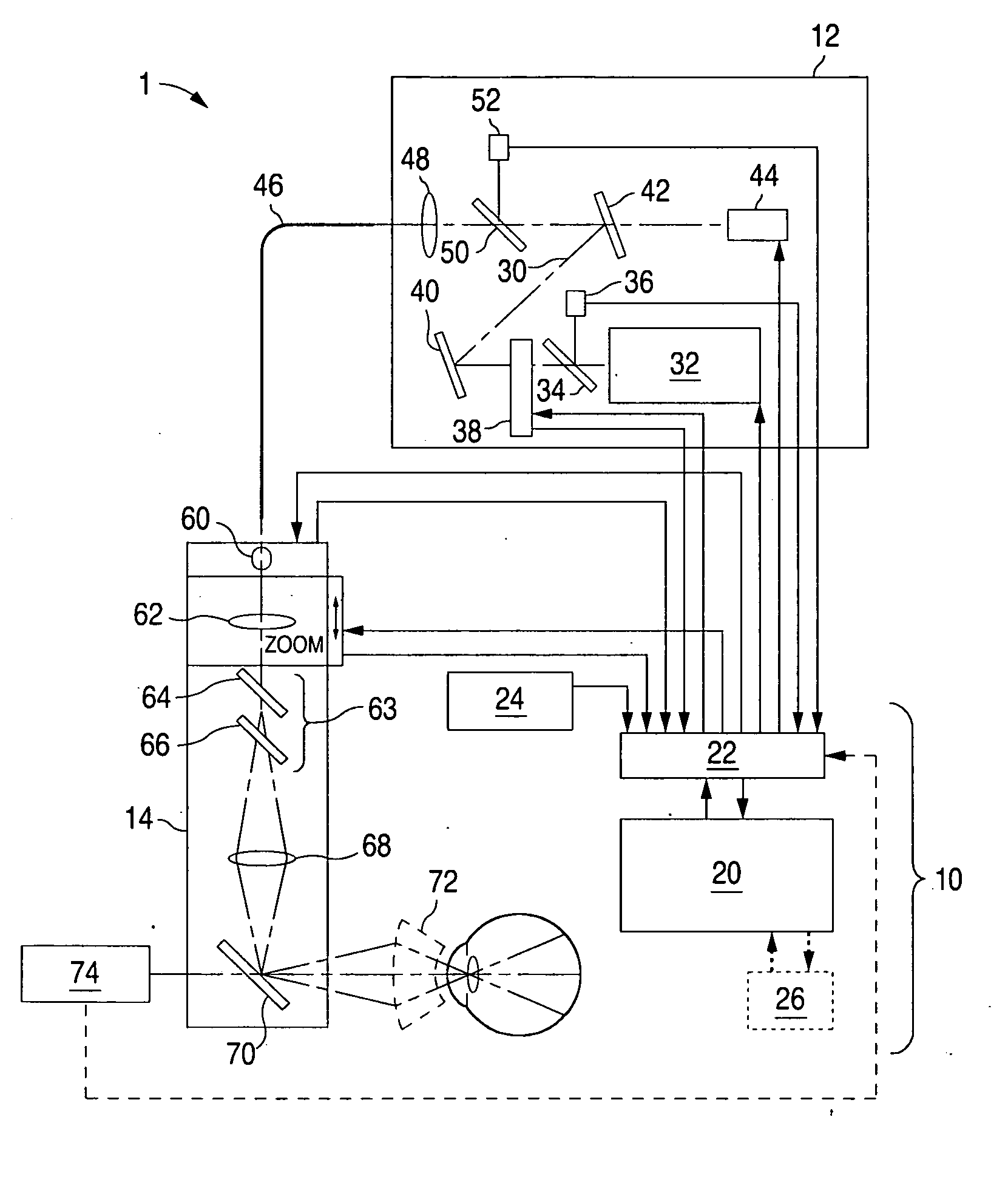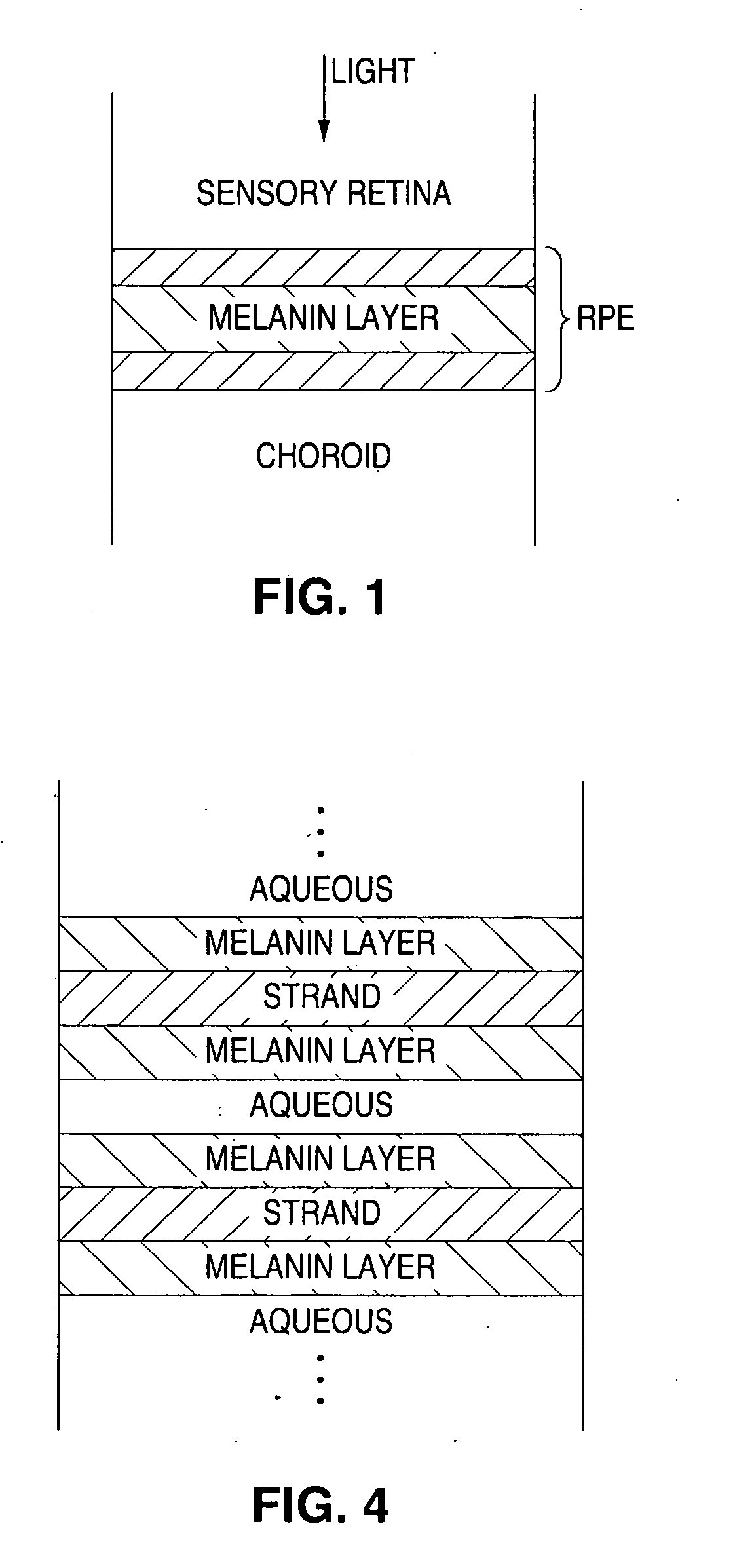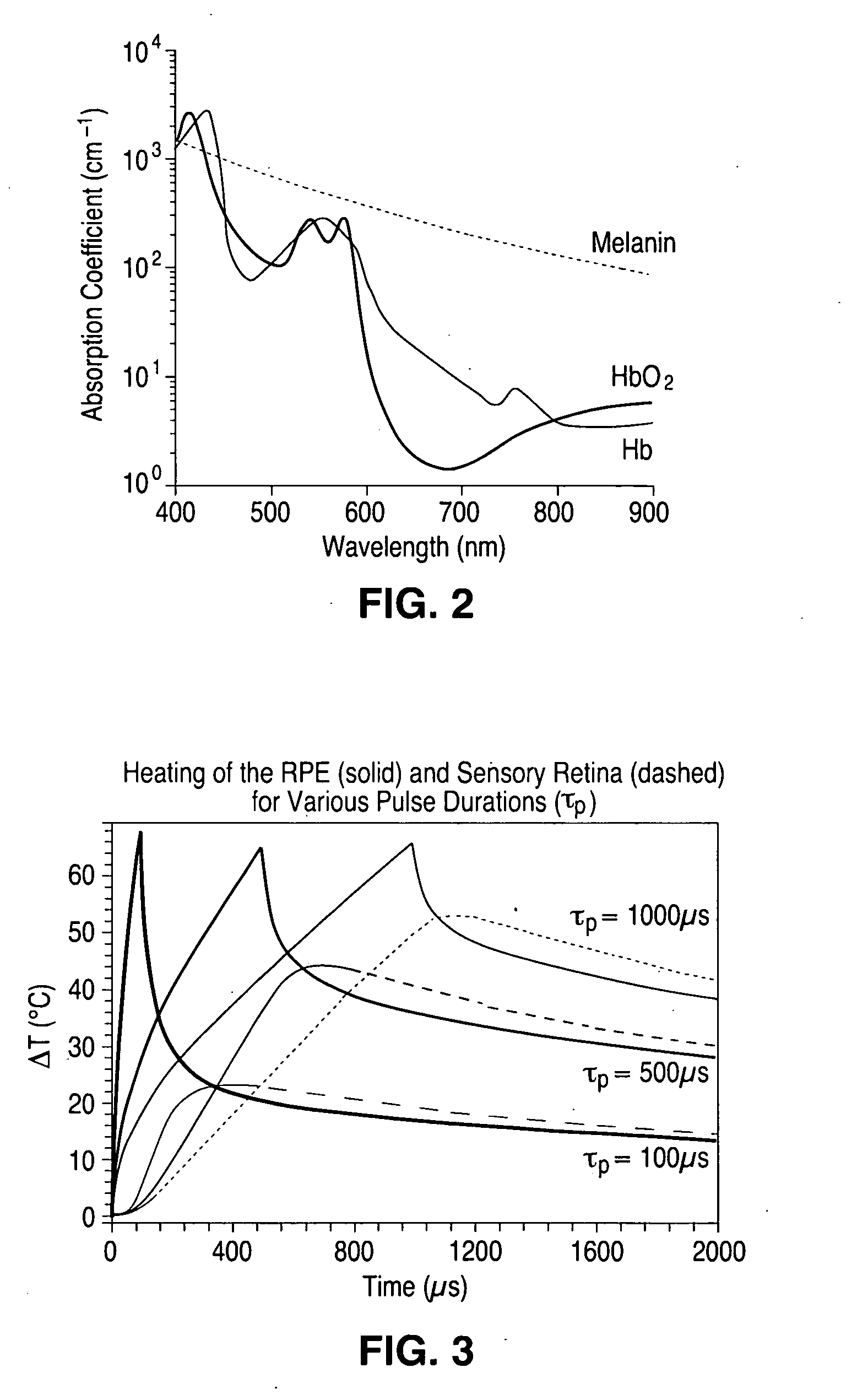System and method for minimally traumatic ophthalmic photomedicine
a technology of ophthalmic laser and photomedicine, which is applied in the field of system and method of minimally traumatic ophthalmic laser, can solve the problems of irreversible damage to the overlying sensory retina, irreversible damage to the patient's vision, and limited use of ophthalmic laser, and achieves superior treatment results
- Summary
- Abstract
- Description
- Claims
- Application Information
AI Technical Summary
Benefits of technology
Problems solved by technology
Method used
Image
Examples
Embodiment Construction
[0024] The present invention is system and method to provide predictable and minimally traumatic ophthalmic photomedical treatment. FIG. 5 illustrates a system 1 for implementing the present invention, and includes a control unit 10, a light generation unit 12 and a light delivery unit 14. This system can provide either pulses of therapeutic light, or continuous scans of therapeutic light, to the eye of a patient.
[0025] The control unit 10 controls the disposition (generation and delivery) of the light, and includes control electronics 20 and resident a input and output 22, as shown. Likewise, input from an input device 24 (e.g. a joystick) and / or a graphic user interface 26, may be used by the control electronics 20 for controlling the light disposition.
[0026] In the light generation unit 12, a light beam 30 is generated by a light source 32, such as a 532 nm wavelength frequency-doubled, diode-pumped solid state laser. The beam 30 first encounters a mirror 34 which serves to sam...
PUM
 Login to View More
Login to View More Abstract
Description
Claims
Application Information
 Login to View More
Login to View More - R&D
- Intellectual Property
- Life Sciences
- Materials
- Tech Scout
- Unparalleled Data Quality
- Higher Quality Content
- 60% Fewer Hallucinations
Browse by: Latest US Patents, China's latest patents, Technical Efficacy Thesaurus, Application Domain, Technology Topic, Popular Technical Reports.
© 2025 PatSnap. All rights reserved.Legal|Privacy policy|Modern Slavery Act Transparency Statement|Sitemap|About US| Contact US: help@patsnap.com



